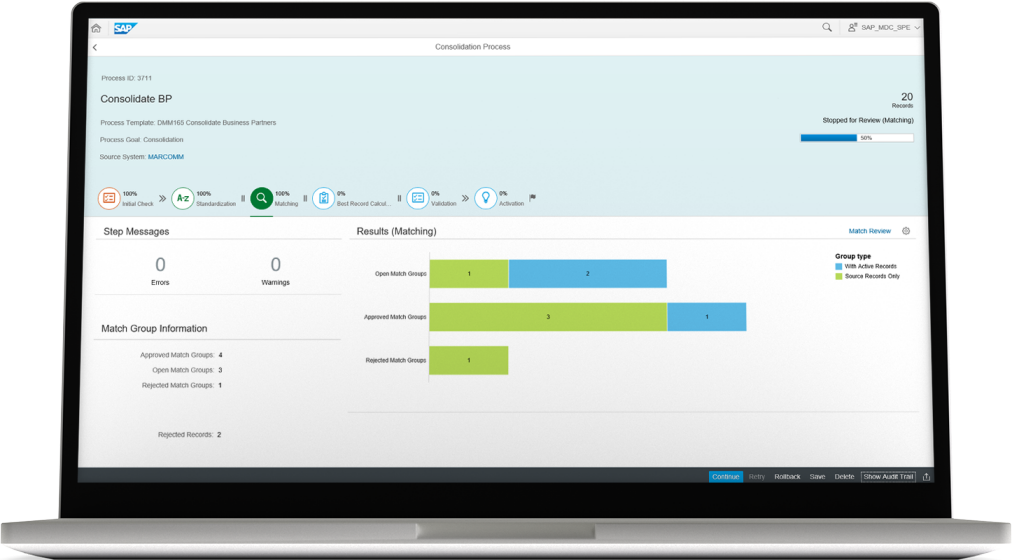
- December 11, 2022
- Alaa Mostafa
- 0
What is master data management (MDM)?
Master data is all the data that is mission-critical to the running of a business. It describes people (customers, employees, and suppliers), places (offices and locations), and things (products and assets). Master data is typically just a small percentage of all business data, but it is some of the most complex – and valuable – data in an organization. Examples of master data include:
Customer master data
As the name suggests, customer master data includes all the core data needed to do business with your customers – from contact information to purchase history and payment terms. Managing master data for this domain includes cleaning and standardizing data across ERP, CRM, and other systems.
For example, the same customer’s name and address could exist in both an ERP and CRM system but be entered in two different ways, like 1030 Sandy Court, 1030 Sandy Crt., or 1030 Sandy Ct. MDM reconciles these differences and provides a single view of each customer that can be used to personalize marketing campaigns, deliver better experiences, and more. In some organizations, customer master data also includes data for employees, healthcare patients, and suppliers.
Supplier master data
Supplier master data includes data for vendor accounts, contracts, policies, pricing, and more. It lies at the center of all important procurement activities, from planning and sourcing to contracting and purchasing. Cleansed and trusted vendor master data is critical for answering questions about supplier spend, pricing, or performance – for example.
Location master data
Key attributes related to physical locations of agencies, corporate offices, distribution centers, and stores are contained in an organization’s location data. Once connected to other data domains, this information can help fuel location-based decision-making – such as determining the right product assortment for a particular store.
Product master data
Product master data management covers attributes such as product number, category, price, features, bills of materials, and all other necessary data points. With uses across processes for sales, marketing, supply chain, and the product development lifecycle, this data needs to be reliable and accurate.
Asset master data
Asset master data describes a business’ fixed and intangible assets, such as inventory, equipment, and trademarks. It usually includes attributes such as depreciation terms and values, asset classes, leasing information, and more. Inaccurate asset master data can lead to sub-par asset utilization and management. For example, equipment master data is used in predictive maintenance processes, so if it’s incorrect, then the predictions would be as well.

Why is master data management so important?
Besides helping an organization make good decisions and answer key questions, master data management has a host of other benefits. Here are just a few:
Reduced errors and redundancies
In data across multiple applications. If the same information, say a customer record, is entered by different teams in an inconsistent way, MDM will merge and reconcile the duplication.
Better analytics insights and data-driven decisions
The saying “garbage in, garbage out” holds true here. If the data being analyzed is not accurate, then the results won’t be either.
Streamlined business processes and greater efficiency
High-quality, consistent master data can be used to speed up and automate end-to-end business scenarios such as lead to cash, source to pay, and design to operate.
Improved transparency and compliance
With data privacy and other regulations. The GDPR, for example, gives people more control over how their information is collected, managed, and shared. Without MDM, records can be fragmented across multiple departmental silos, making compliance difficult.
Support for mergers and acquisitions
With a streamlined process for merging and reconciling multiple data assets.
Data is crucial for powering digital business processes, and master data is the foundation that all other data relies on. Organizations that have accurate and consistent master data are better positioned to succeed.
Source: SAP Insights


